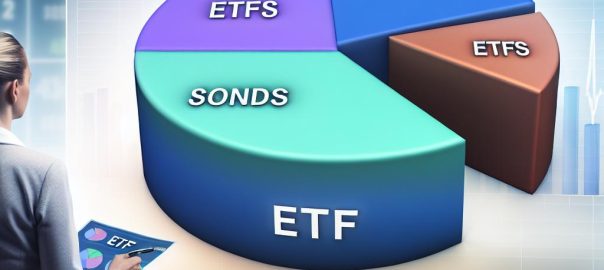The Importance of Bond ETFs in Fixed-Income Portfolios
Investing in bonds remains a common approach for fixed-income investors due to its potential for stable returns and portfolio growth. Particularly, Bond Exchange-Traded Funds (ETFs) have emerged as an efficient vehicle for investors to gain access to a diversified range of bonds without the obligation of managing individual securities. Bond ETFs are particularly attractive due to their ease of trading on stock exchanges, transparency, and relatively low expense ratios.
Understanding the Role of Bond ETFs
Bond ETFs serve as pooled investment vehicles that track the performance of a specific bond index. They trade on major stock exchanges similar to individual stocks, allowing investors to purchase and sell shares throughout the trading day at market prices. The underlying assets of a bond ETF are bonds themselves, varying across different types and categories, which contribute to the ETF’s overall yield and risk profile.
The function of bond ETFs in a fixed-income portfolio is to deliver exposure to various bond market sectors, diversify risk, and provide income streams that are consistent with an investor’s financial goals. By investing in bond ETFs, investors eliminate the complexities involved in directly managing individual bonds, such as maturity and liquidity issues, thereby simplifying investment strategies for both novice and seasoned investors alike.
Types of Bond ETFs
Bond ETFs can be classified into several types based on factors such as maturity, credit quality, and geographic region. Below are some of the prominent categories of bond ETFs:
Government Bond ETFs: These ETFs predominantly invest in bonds issued by sovereign governments. They are often regarded as low-risk due to the backing of governmental powers, such as taxation. For example, the iShares U.S. Treasury Bond ETF focuses primarily on U.S. government securities, offering stability and security.
Corporate Bond ETFs: This category targets bonds issued by corporations. Corporate bond ETFs potentially provide higher yields than government bonds and encompass various credit qualities ranging from investment-grade to high-yield or junk bonds. They usually demand a higher risk tolerance, depending on the issuing corporation’s financial health.
Municipal Bond ETFs: Municipal bonds, or “munis,” are issued by state and local governments. One attractive feature is that their interest income is generally exempt from federal taxes and, in some cases, state and local taxes as well. An example of a municipal bond ETF is the SPDR Nuveen Bloomberg Municipal Bond ETF, offering tax-efficient income solutions.
Factors to Consider When Choosing Bond ETFs
Selecting the appropriate bond ETF requires careful consideration of several critical factors:
Investing Goals: Clearly define your investment objectives—be it income generation, capital preservation, or diversification. Understanding your primary goals will greatly assist in identifying bond ETFs that match your risk tolerance and return expectations.
Expense Ratio: This indicates the cost of owning an ETF. Expense ratios are crucial since they directly influence the net returns of your investment. Opting for lower expense ratios ensures that a larger portion of your investment gains remains untapped by fees.
Duration and Maturity: Considerations of the ETF’s duration and maturity are important as they affect its sensitivity to interest rate fluctuations. Longer durations generally correspond to higher sensitivity to changes in interest rates, influencing yield and pricing.
Credit Quality: Scrutinize the credit quality of the bonds within an ETF. Bonds with higher ratings typically offer more security but tend to yield lower returns. Analyzing credit ratings can aid in assessing the risk profile of potential ETF investments.
Popular Bond ETFs to Consider
Investors exploring options within the bond ETF domain might consider the following popular choices:
– iShares Core U.S. Aggregate Bond ETF (AGG): Tracking an index comprised of U.S. investment-grade bonds, this ETF offers broad exposure to government, corporate, and mortgage-backed bonds, making it a staple for general fixed-income diversification.
– Vanguard Total Bond Market ETF (BND): Offering vast exposure similar to AGG, this ETF includes bonds from the entire U.S. market, such as Treasury, corporate, and international dollar-denominated bonds.
– Invesco Emerging Markets Sovereign Debt ETF (PCY): Targeting sovereign debt from emerging markets, this ETF might attract investors seeking higher yields, provided they can withstand the associated increased risk.
Conclusion
Investing in bond ETFs provides a strategic approach for gaining exposure to a wide array of fixed-income securities without encountering the complexity inherent in managing individual bonds. Investors who rigorously evaluate factors such as expense ratios, duration, and credit quality can choose ETFs that are best suited to their financial aspirations and risk thresholds. To further aid in making informed decisions, an abundance of financial websites and investment platforms offer detailed insights and the latest market data on bond ETFs.










